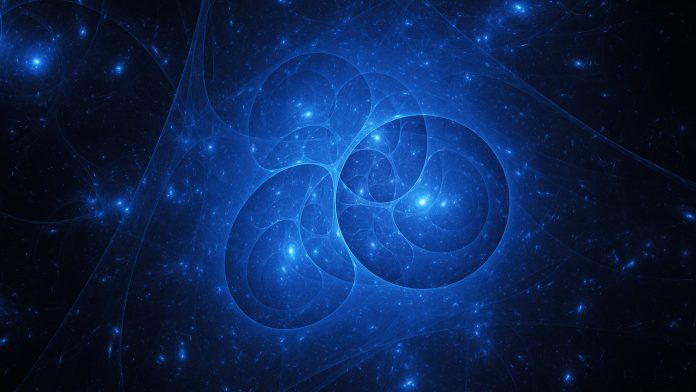A Tokyo Metropolitan University scientist has revealed that Fermi bubbles around the centre of our galaxy were produced by outflowing winds.
A scientist has discovered that Fermi bubbles (large gamma-ray emitting bubbles) around the centre of our galaxy were produced by fast-blowing outward winds and the associated ‘reverse shock.’ To confirm this theory, Professor Yutaka Fujita from Tokyo Metropolitan University, successfully used numerical simulations to reproduce the temperature profile observed by an X-ray telescope. Similar outward winds have been observed in other galaxies, suggesting that comparable winds have been blowing in our galaxy until recently.
The paper, ‘Evidence for powerful winds and the associated reverse shock as the origin of the Fermi bubbles,’ is published in the journal Monthly Notices of the Royal Astronomical Society.
What are Fermi bubbles?
The Universe is full of enormous celestial objects which do not currently have an explanation. Fermi bubbles, so-called due to their discovery by the Fermi Gamma-ray Space Telescope in 2010, are one of these objects.
Fermi bubbles are massive gamma-ray emitting regions that extend either side of the centre of our galaxy, over 50,000 light-years. These bubbles protrude out from the plane of the galaxy. Despite their large scale, scientists have previously struggled to pinpoint how Fermi bubbles are formed.
New evidence suggesting the formation of the bubbles
Over the years, there have been various hypotheses put forward about the formation of Fermi bubbles, including an explosive activity of the central supermassive black hole, winds from the black hole, and steady star formation activity. Previously, it has been challenging to tell these scenarios apart. However, to aid in this endeavour, Professor Fujita used X-ray observations from Suzaku satellite to compare measurements with what is expected from various scenarios.
In his simulations, Professor Fujita considered fast outflowing winds from the black hole injecting the necessary energy into the gas surrounding the centre of the galaxy. The scientists then compared this with the measured profiles, subsequently discovering that it was likely that the bubbles are produced by fast-outflowing winds, blowing at 100km per second over ten million years.
These winds are not what we experience on Earth, but instead are streams of highly charged particles traveling at high speeds, propagating through space. These winds travel outwards and interact with nearby ‘halo gas,’ causing a ‘reverse shock’ that creates a characteristic temperature peak. The Fermi bubbles correspond to the volume on the inside of this reverse shock front.
The simulations revealed that an instantaneous explosion at the centre could not reproduce the profiles measured by the telescope, backing up the scenario based on winds generated by a black hole.









